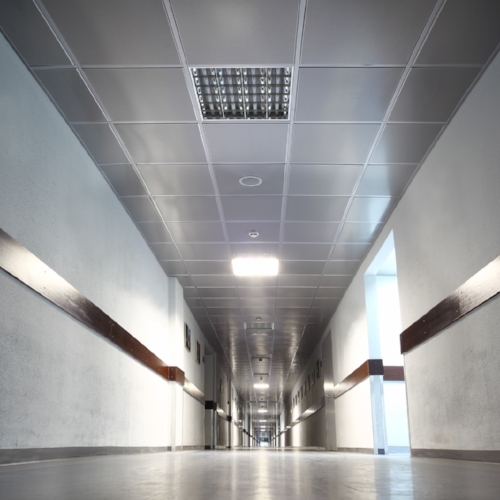The Importance of Emergency Light Testing
/Within the property services industry it is common knowledge that employers have a responsibility to ensure their premises meet regulations, are compliant and safe for their staff and customers. Electrical safety forms a major part of building compliance and in this blog we look at the importance of having your emergency light systems regularly tested.
What is an Emergency Light Test?
Emergency lighting is lighting for an unforeseen situation when the mains power supply is cut, and normal illumination fails. This may lead to sudden darkness and a possible danger to staff and customers, either through physical danger or mental distress. The purpose of emergency lighting is to allow work continuity or in worst-case scenarios, safe evacuation of staff and/or public.
Ensuring the lighting tubes inside of your emergency light system are working is one thing, it is just as important to make sure the back-up battery is in full working order. Your maintenance plan should include for a competent person to carry out periodic checks for both, this must be documented in the onsite, fire safety logbook. The back-up batteries should be capable of providing power for a minimum of 3 hours after the mains fail.
How often should emergency lights be tested?
Monthly Emergency Light Test
Monthly testing can be carried out by the “responsible” person on site or a hired contractor. This would involve the mains power supply to the general lights to be switched off. Usually there is a separate switch installed to allow testing of emergency systems without switching off all mains, often via a fish key switch. A walk around is carried out to ensure all emergency lights are visibly working. Results are recorded in the fire safety log book and immediate remedial requests will be made if any defects are found.
Annual Emergency Light Test
Annual tests are preformed by the “responsible” person on site or hired contractor via the same process as monthly tests, with the difference being that the emergency units are left illuminated for 3 hours. If any lights are not on for the full duration, the back-up battery calls for a replacement. These tests should preferably be carried out, out of hours to prevent a potential emergency situation after all emergency lights have been drained.
Reasons to ensure your emergency light testing is up to date:
Safety always come first. Regular testing of your emergency light systems will provide peace of mind that the workplace is safe for you and your staff. When power is disrupted, buildings can become dangerously dark, making it difficult to navigate during an emergency without suitable emergency lighting in place.
Ensuring your building is compliant. Having your emergency light testing up to date shows that you understand the importance of remaining compliant and your responsibilities as set out by British Standards BS 5266-1:2016 and BS EN 50172.
Reduced Liability. If your emergency light fixtures are not operating correctly, accidents, injuries or property damage could occur during a power outage or an emergency. This could lead to claims against the building's insurance policy and may lead to higher premiums in the future.
Improved Performance. When emergency light fixtures are not tested regularly or maintained properly, they can perform poorly in an emergency situation. Weak batteries can reduce the operating time of the fixture or lead to abnormally dim illumination during use. Old lamps can prevent the fixture from providing sufficient light, they can also drain the battery quicker than normal. Performing simple maintenance on the system ensures that both the batteries and lamps are performing to their optimum and will operate for the required amount of time should an emergency occur.
Save System Life. Regular testing of each fixture can help spot damaged emergency light batteries or lamps before a more severe fault occurs. This can prolong the life of the fixture and can reduce future repair costs to the emergency light system.
JCW have history dating back to 1903 within the electrical engineering industry. Although our business model has changed over the years, the electrical engineering services we provide continues to form half of our maintenance turnover.
This experience puts us in a strong position when tendering for new work, it also provides our existing customers with peace of mind in that we are looking after their electrical assets, ensuring that they remain compliant. If you would like to know more about how we can ensure your electrical systems remain compliant contact us now, we will be happy to help and advice.












